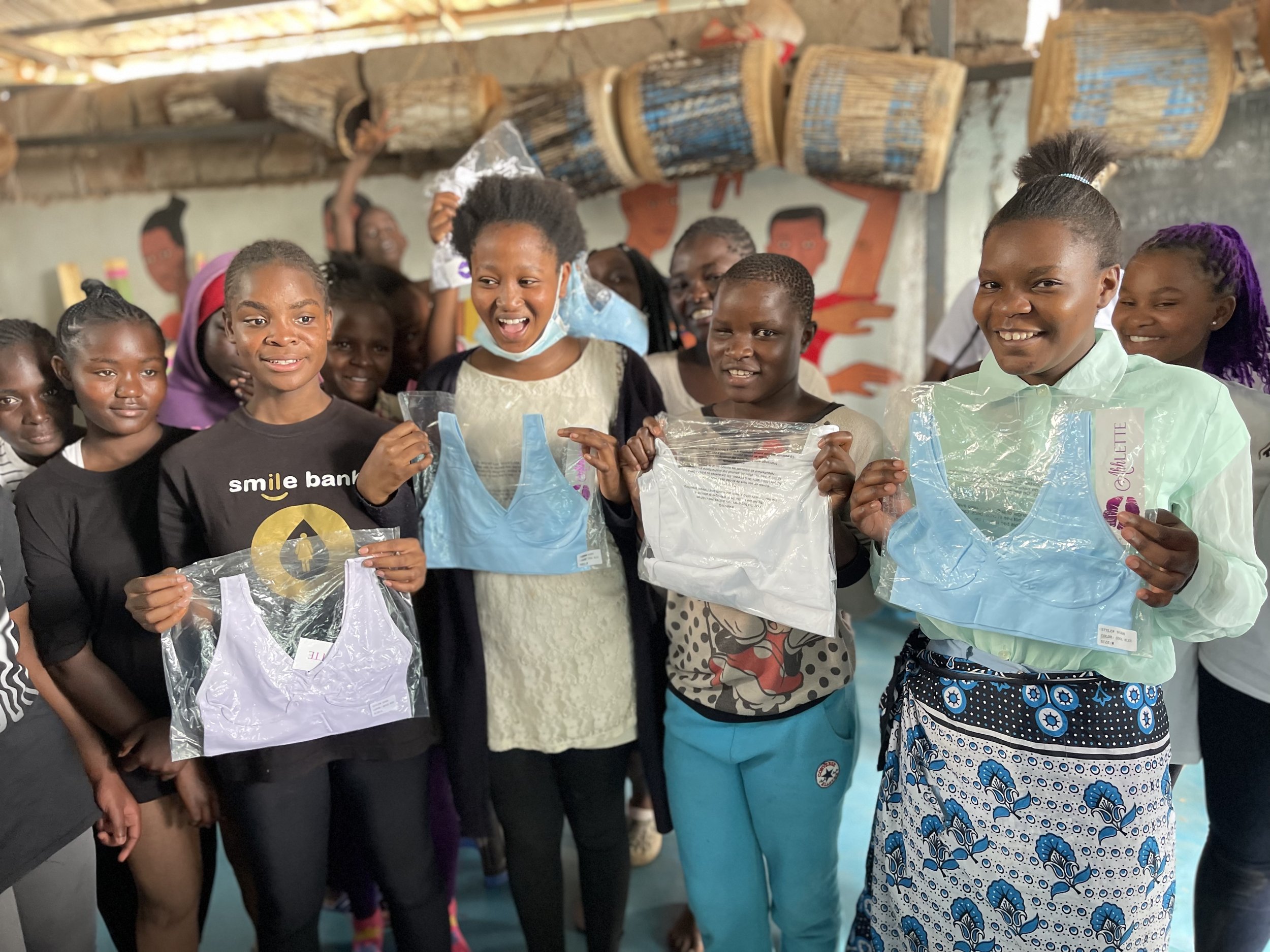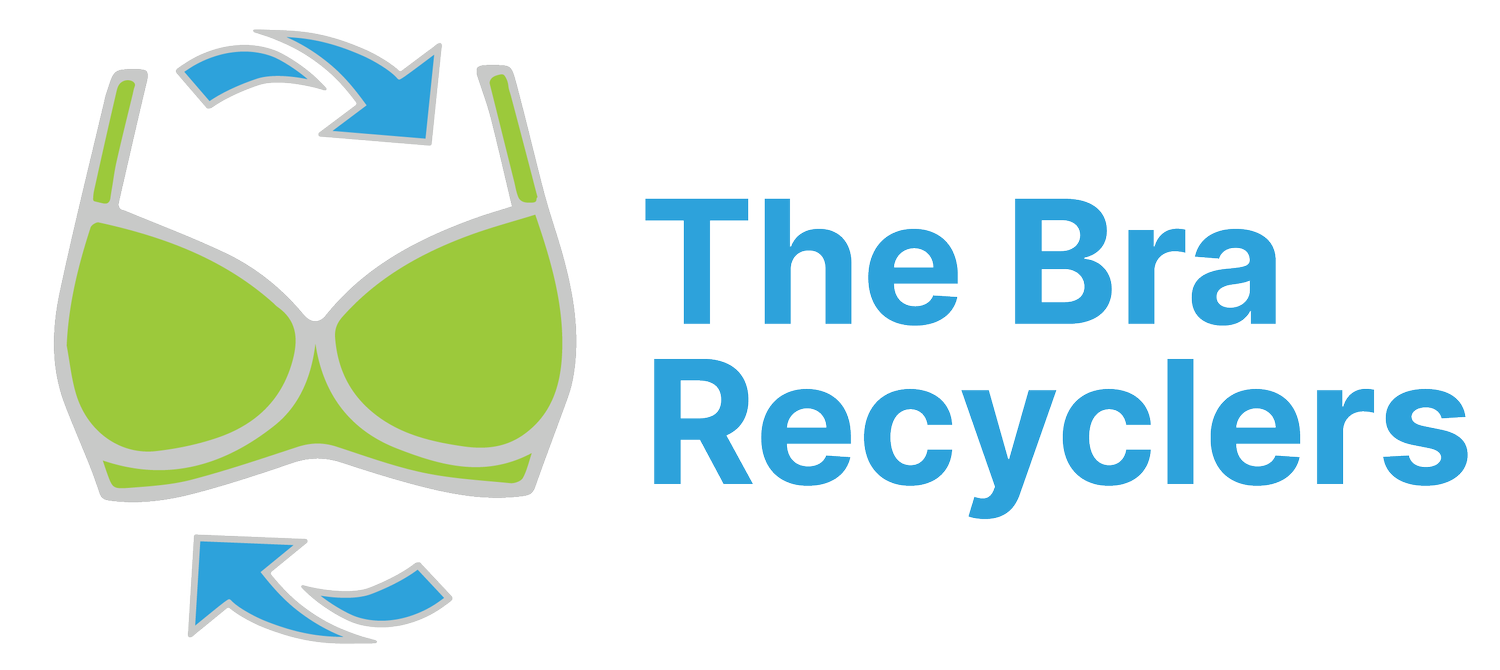
What is the
Circular Economy?
The circular economy is designed to minimize waste and continually reuse resources.
Instead of the traditional linear model of make, use, and dispose of, the circular economy focuses on keeping products and materials in use for as long as possible through strategies like recycling, refurbishing, and remanufacturing.
This approach aims to reduce the environmental impact of production and consumption while promoting sustainability and resource efficiency across various industries.
Joining forces with The Bra Recyclers can help your organization promote sustainability and support a more environmentally friendly approach to managing textile waste and supporting individuals and families in need.
The Bra Recyclers has advocated and supported the circular economy for the past 15 years.
The Bra Recyclers was created to provide bras and underwear for women and girls in transitional programs and shelters who lack belongings and a sense of safety.
Since many bras and other reusable textiles end up in landfills, this provided an opportunity to break the destructive cycle of consumption and waste and open the doors to circularity.
By collecting and recycling bras, you contribute to reducing waste and conserving resources, which aligns with the principles of the circular economy.
Instead of sending these items to landfills where they would contribute to environmental waste, working with The Bra Recyclers allows you to divert materials from the trash.
Partnering with The Bra Recyclers helps planet-conscious individuals and sustainably led businesses participate in the circular economy by providing a responsible solution for disposing of unwanted bras, new underwear, and lingerie overstock and returns.
How The Circular Economy
Supports People Facing Adversity
"One man's waste is another man's treasure."
By joining the circular economy, you not only help protect the planet's finite resources by recycling and reducing waste, but this economic model creates valuable resources for people in need.
-
Implementing circular economy practices can lead to the establishment of new industries focused on recycling and repurposing materials.
This can create jobs in areas such as waste management, recycling facilities, and refurbishment services, providing employment opportunities for individuals seeking work.
Working with local organizations, The Bra Recyclers has created job opportunities for individuals with disabilities who cannot work in a ‘normal’ work environment.
-
By promoting the reuse and repair of products, communities can access quality items at lower costs, benefiting those who may struggle to afford brand-new goods.
Simple items like bras and underwear can be out of reach for those facing challenges like homelessness, domestic violence, human trafficking, or even burdened with medical expenses after surviving breast cancer.
-
The circular economy requires diverse skill sets, from waste sorting and repurposing to design and innovation.
By engaging in circular practices, individuals can develop new skills and expertise, enhancing their employability and opening up new opportunities for personal and professional growth.
-
Individuals can build stronger community connections and receive support from their neighbors by participating in local recycling programs, repair workshops, or resource-sharing initiatives.
Our Recycling Ambassador program, brings together like-minded businesses and individuals who are passionate about helping individuals and families in our community who are facing challenges in their lives. Becoming a Recycling Ambassador allows you to support our planet and the people who live on it.
-
Beyond the economic advantages, the circular economy contributes to environmental sustainability by conserving resources and reducing waste. This, in turn, can benefit communities by mitigating the impact of pollution and climate change, safeguarding the health and well-being of residents.
The principles of the circular economy offer a multifaceted approach to assisting those in need.
Become an Advocate for the Circular Economy
We look forward to partnering with circular economy advocates who want to strive to bring about positive changes that benefit both people and our planet. Learn more about how we can partner with you below.
-

Retailers
By partnering with retailers and businesses, we can help brands align with the growing demand for sustainability from their customers, investors, and stakeholders.
-

Textile Recyclers
By collaborating with recycling companies that either currently include textiles in their recycling or aspire to, we provide a valuable solution for recycling companies and their customers
-

Individual Recyclers
By recycling their bras and new underwear with us, our community of recyclers actively diverts textiles from landfills and supports a sustainable and socially responsible initiative
-

Nonprofit Organizations
By participating in our bra recycling programs, non-profit organizations actively contribute to environmental sustainability initiatives and support social causes that promote health and empowerment in their communities.





